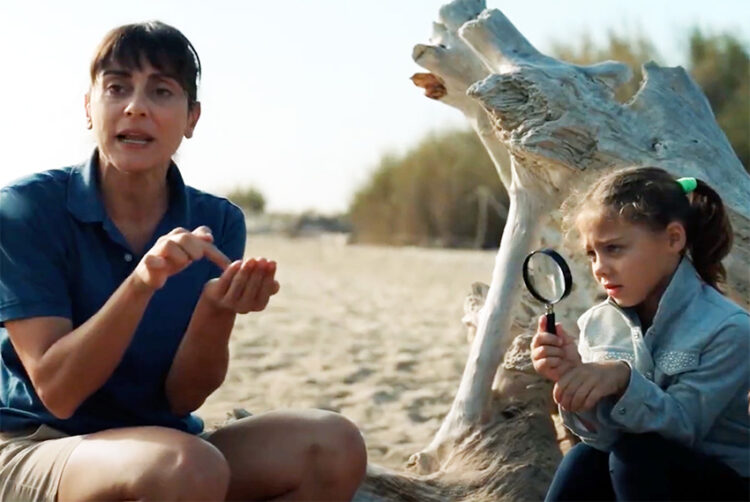Sustainable production is an obligation, not an option

Opinion
Ahead of World Environment Day, we must focus on finding more ways to reduce emissions in the advertising ecosystem to support the wider cause.
Since 1973, the United Nations has designated 5 June as World Environment Day to encourage awareness of and action to protect our environment. Sadly, the advertising and creative sectors contribute significantly to the issues being addressed on such a day.
According to Business Green, the estimated total CO2 equivalent emissions of advertising agencies exceed 84,000 tonnes annually. And that’s just one part of the advertising ecosystem.
There is hope, however, in how we can tackle this, in particular when it comes to content production, as we take steps to mitigate — and even eradicate — the negative impact.
Strategic imperative
Change is being driven in our industry because our people want to be part of the solution to the climate crisis. This can be through the role advertising plays in influencing corporate policy and consumer behaviour.
But it can also be through making a positive contribution by prioritising sustainable content creation as a strategic imperative — not just something that is nice to have.
One of the most effective movements driving such change is Ad Net Zero, led by the Advertising Association. Create, CNN’s brand studio that I’ve been part of for almost 20 years, has been on the steering group of Ad Net Zero since its inception, along with some of the world’s biggest brands, agencies and publishers that are also becoming, or pledging to become, net zero when it comes to production of advertising content.
My guiding principle is that only substantiated sustainability can demonstrate carbon neutrality. Producers of advertising and branded content achieve this by calculating a carbon footprint and reducing it to zero through a combination of efficiency measures in-house and supporting external emission-reduction projects.
There is no quick fix, but by sharing some of the things I’m learning along this journey, I hope it can help others tackling the same challenges.
Start with people and processes
Reducing the carbon footprint of production starts with people and processes. We believe we are doing something that’s both good for the planet and for us, as we expand our skillsets and future-proof both ourselves and our studio.
We now run every live action film we produce through the Ad Net Zero-certified AdGreen carbon calculator to measure, reduce and offset the carbon footprint of production. AdGreen helps with practical solutions such as finding more sustainable alternatives for materials and transport, providing information on electricity and fuel usage, renting props and costumes, considering what chemicals are in paint and make-up, providing locally sourced vegetarian meals as well as reducing waste and single use plastic.
It’s a challenging process. But I’ve been very impressed with the enthusiasm to learn and adopt these production practices from our team and across the third-party talent and crew members we work with.
Measurement is key
But it’s not enough to just implement these processes. Only by measuring and documenting our footprint will a production team be able to know if they’ve reached ad net zero. This is painstaking, but becomes less arduous when embedded as part of the production process.
Create is proud to have attained Superuser status in AdGreen’s latest annual review, ranking among the top 10 agency users in the world. We are among a select group of studios and agencies that have created the greatest number of carbon calculator projects.
So far, we have applied carbon reduction methods and offset unavoidable carbon on over 100 productions, in the process funding over 18 carbon projects across the world.
More than planting trees
The funding of projects through carbon offsetting is also an important part of the process — and purpose — of this initiative. It can’t be an afterthought. The often-default option of planting trees is by no means a bad thing to do, but such projects can take many years to make a difference.
We try to be very intentional in the projects we support. This works best when a project can correlate directly to the content you are producing and the campaign you are working on.
For example, our recent work for Samsung featured a marine biologist dedicated to preserving the ocean. In offsetting our unavoidable carbon stemming from the production, we chose to fund Delta Blue Carbon’s mangrove restoration project, which captures the equivalent amount of carbon emitted from our project while also safeguarding ocean ecosystems and communities.
Staying the course
Along this journey, our studio has of course faced challenges — making our transition to carbon neutrality with logistical hurdles, the same budgets as before and the pressure to add new processes while meeting tight deadlines on a regular basis is tough.
It was a big decision to make our net zero pledge and stick to it. However, we have stayed true to the course through collaboration and creativity, as well as through sharing our experiences and learning from others. For example, our entire production team — from London to Tokyo — undertook the IPA Ad Net Zero Essentials training.
As we mark another World Environment Day, let’s seize the opportunity to make sustainable production an obligation, not an option — and, in doing so, make our contribution to important efforts across our industry.

Martin Laing is senior director of production at CNN Create




